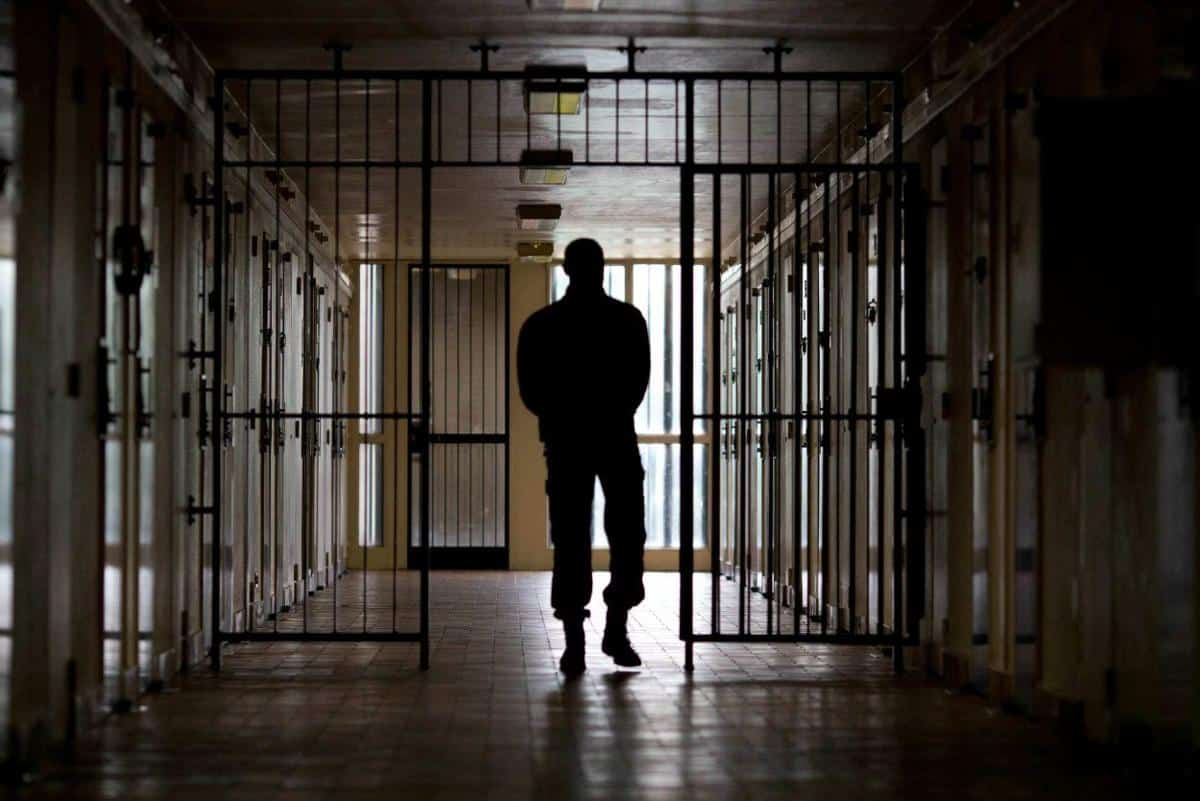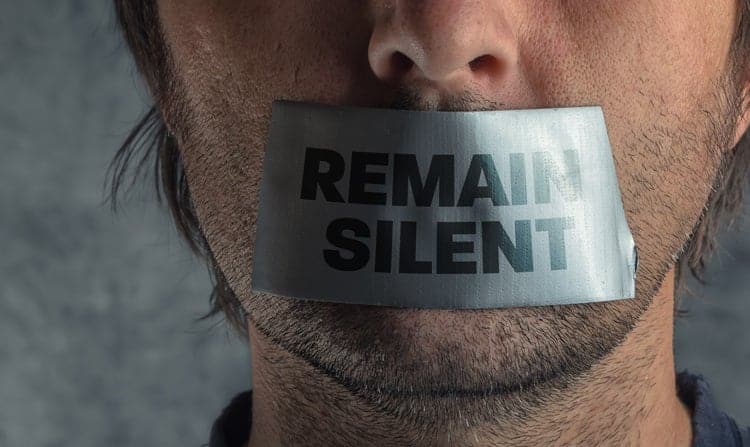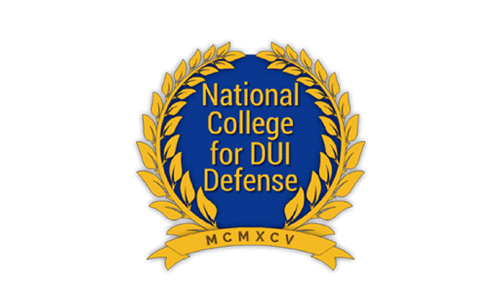Nave News
Bail Reform In New York State-TWO SIDES
Our Senior Attorney, Derek Andrews, recently studied several articles about the New York bail reform changes and also spoke with members of the NYS Legislature on the same subject. After this, he felt compelled to share his thoughts. Why? The answer is because the vast majority of us are getting bad information about what bail reform means for our state.
By now you’ve probably heard the tale of bail reform being a disaster perpetrated by law enforcement agencies and prosecutors, but what you should hear is the far more positive and factually and legally accurate tale of what bail reform is actually accomplishing. Here is the other side of the bail reform according to Mr. Andrews.
Let me be clear:
- bail’s only purpose is to ensure someone charged with a crime returns to court;
- those who could afford bail always had their freedom but those that could not, would be locked up waiting for months and years before their cases were resolved; and
- bail was never designed to keep the public safe.
The American criminal justice system is based on the principle that anyone charged with an offense, whether misdemeanor, felony, or violation, is innocent until proven guilty. In other words, if you hear of someone who has been charged (and not convicted) with a crime, that person is still presumed innocent and should enjoy the freedoms associated with innocence, which include the due process of law. That means there is an entire court process, which includes law enforcement investigation, court appearances, exchange of information between the government and the defense (called discovery), pre-trial suppression motions and hearings, and a trial by jury before someone’s innocence could be stripped from them. It seems as if the individuals opposing the bail reform have forgotten that principle when they complain about people charged with crimes not being sent to jail yet. That’s because they’re not guilty of anything yet.
Bail’s singular purpose is to ensure that someone charged with a crime continues to appear for court as directed by a judge until his or her cases are resolved. Bail ceases to be a concern once someone is convicted and sentenced, which opens up the possibility that this defendant can be sent to jail or prison. However, bail, as it was used before January 1, 2020, was more commonly a tool to keep people, especially those who could not afford to pay their bail, locked up. Would you want to stay in jail without having been convicted of any crime just because you couldn’t afford to pay bail? Kalief Browder sure didn’t.
Shortly before Kalief’s 17th birthday in 2010, NYPD arrested him on suspicion of stealing a backpack containing an iPod, $700 in cash, a camera, and a credit card but no backpack was ever recovered. Despite Kalief maintaining his innocence and the victims’ own statements contradicting each other, Kalief was held at Rikers Island for more than three years on bail of just $3,000—an amount his family could not afford. The prosecution eventually dismissed these charges but not before the damage of incarceration was done. Kalief hanged himself two years after he was released.
Although Kalief’s story is considered the prime example of why bail reform was needed, the defense community can tell you hundreds of shocking stories of people forced to sit in jail on cash bail they or their families could not afford despite not having been convicted of any crimes.
What doesn’t seem to get traction lately are the stories of individuals who have since been released from jail pending a resolution of their cases who have gone back to their families, to their jobs, and to their lives without being forced to sit in jail or spend money they simply do not have. Organizations across New York State are currently collecting these stories so we can start illustrating just how positive bail reform actually is for the people historically affected by it the most.
You may have even heard that bail reform is making our communities more dangerous, and you may have even seen floating around on social media the list of offenses that are no longer eligible for bail. That list is fearmongering at its worst because what that list fails to elaborate on is that the people who may be charged with those offenses have not been convicted of anything yet.
Keeping that same list of offenses in mind….before January 1, 2020, judges were already authorized to release people charged with any of those offenses on their recognizance and without bail. In other words, nothing has changed, other than permitting impoverished individuals charged with those crimes to be out with their families and maintaining employment. Before January 1, 2020, some judges abused their discretion by jailing people on low-level offenses and setting inordinately high bail.
A case in point on this issue comes from Cohoes City Court in Albany County where a judge now seeks to impose cash bail on a young man charged with driving on a suspended license. Despite not being a bail-eligible offense, and without engaging the proper procedural hearing to learn whether any alleged failures to appear in court were willful, this judge wants to jump past all of the other less restrictive means of ensuring a defendant comes back to court and jail this young man on $100 cash bail—an amount he and his family have already said they cannot afford. You can read about that story here.
On the subject of jailing people considered to be dangerous prior to them being found guilty of any offense, I would caution those that suggest “dangerousness” measures should be used to decide whether an individual should be locked up pending trial by reminding them that many risk assessment tools are not only flawed but further undermine the principle that we are all innocent until proven guilty. There is no reason to pre-judge an individual without getting all of the facts. Other than mere allegations, and with the discovery not necessarily having been completed, there aren’t any facts to justify incarceration without a conviction. Moreover, New York has always limited decisions on bail to the risk of flight alone. In fact, dangerousness as a means of holding people charged with crimes in jail was specifically rejected by the NYS Legislature in 1970 when they passed a new Criminal Procedure Law following a nine-year commission on the subject of criminal justice reform.
Finally, a recent study published by the Vera Institute of Justice, an organization dedicated to building and improving justice systems that ensure fairness, promote safety, and strengthen communities, revealed that rates of crimes such as murders, rapes, and grand larcenies in NYC are actually down in the first few weeks of 2020 compared to that same time period in 2019—before bail reform took effect. Their conclusions are that it is too early to predict the true impact of bail reform and that fearmongering based on misleading stories should not be allowed to drive policy decisions.
But let’s not just talk about bail reform, let’s look at the actual changes involved in bail reform in the criminal procedure law itself:
- Once a defendant is arrested, the police must issue the defendant an appearance ticket directing him or her to show up for a court appearance within 20 days for all misdemeanor and class “E” felonies, except for Rape in the Third Degree, Criminal Sex Act in the Third Degree, Escape in the Second Degree, Absconding from Temporary Release in the First Degree, Absconding from a Treatment Facility in the Second Degree, and Bail Jumping in the Second Degree.
- Defendants arrested for the specific offenses listed above and A, B, C, and D felonies may be held for arraignment before a judge where a securing order can be issued at that time. A securing order is merely a judge’s decision on someone’s release status—either released on their own recognizance (a promise to the court to come back to court), held on cash bail, or released under the supervision of pre-trial services agencies.
- A police officer may hold a defendant for arraignment before a judge and decision on a securing order if the person has outstanding warrants, has failed to appear for court in the last two years, has been given a chance to provide means identification and refuses to do so, is charged with a crime between members of the same household or family, is charged with a sex-related crime, is charged with a crime that may require an order of protection, is charged with a crime that may require the revocation or suspension of a driver’s license, or is in need of immediate medical or mental health care.
Here are the options and changes once a judge sees a defendant during his or her arraignment:
- Bail is eliminated for misdemeanor offenses, except for sex offenses and criminal contempt charges for violations of orders of protection in domestic violence cases;
- Pre-trial detention, otherwise known as “remand,” was eliminated in misdemeanor cases;
- For nonviolent felonies, bail and pre-trial detention were eliminated except for witness intimidation or tampering, conspiracy to commit murder, felony criminal contempt charges involving domestic violence, and a limited number of offenses against children, sex offenses, and terrorism-related charges;
- In cases involving violent felonies, bail and pre-trial detention are still available as options for securing a person’s presence in the courtroom, except for specific subsections of burglary (where the building is merely a dwelling) and robbery (where no injury is suffered, or no weapon is involved); and
- So-called qualifying offenses such as all other subsections of burglary and robbery, witness intimidation and tampering, drug trafficking, sex offenses, conspiracy, money laundering, and terrorism could still be considered for bail, pre-trial detention, or release under non-monetary conditions.
It is important to note that should a defendant released on his or her recognizance or under the supervision of a pre-trial services agency fail to appear for court, commit a new crime, or otherwise violate release conditions, a court may re-examine the original securing order following a hearing where credible evidence must be presented about, among other things, a defendant’s willful failure to appear in court.
Here’s an example of why bail reform was necessary:
- Nave Law Firm represents an individual who is now facing imminent removal from the United States, his home for more than half of his life. The reason? Because he previously plead guilty to a drug-related felony, which we believe he did not commit after our investigation. He plead guilty so that he could get out of jail and back to his job to support his family. He had been held in jail without bail for nearly five months. Had bail reform been in place during his original case, he would have been free to assist in his defense and would not have been inclined to plead guilty so that he could get out of jail. This is just one example of several.
Here’s an example of why bail reform works:
- Nave Law Firm also represents another individual who, although he was not charged with any bail-eligible offenses, presented to the court for his arraignment as directed by an appearance ticket and was found to have had a criminal history that prevented a local court from issuing any securing order. The local court had no choice but to remand him into custody. We quickly made an application to a superior court demanding his release under the new law, which was granted. The superior court judge released him to the supervision of a pre-trial services agency that will now ensure he reports to them regularly, engages in substance abuse and mental health treatment, and shows up to court when he is required.
The Nave Law Firm would ask that the public at large think critically about these reforms, and we would urge our NYS legislators in both houses to allow these sweeping, forward-thinking, and revolutionary reforms to thrive. Remember that these reforms have been in effect for just over a month, and no one on either side has the data or statistics yet to suggest that these reforms are not working the way they were intended. If you want that data, ask your Senator or Assembly Member to add data collections tools to the bail statute. Bail reform’s goal was to level the playing field between all New Yorkers and prevent the criminal justice system from penalizing the poorest among us. It’s doing exactly that.
Talents working together with a collective energy to help solve every day people problems.
Nave Law Firm is a team of skilled attorneys, paralegals, legal assistants, and advocates dedicated to providing clients with a high-caliber, legal representation to achieve successful results. At Nave Law Firm, We understand that every client’s situation is unique, so we never offer a one-size-fits-all solution. Sounds simple, but by focusing on solving everyday people problems, we’ve developed a reputation for compassion, honesty, and positive results that set us apart from the other firms.

sentation
Our honest, transparent approach to client representation helps us better protect our clients.
With more than 100 years of experience, we leverage our insight to benefit our clients.
We are dedicated to being a faithful and reliable support system for our clients.
what our clients are saying
Honest great lawyer, and very empathetic and reasonable. Their Willingness to work with you and help is amazing. Would highly recommend. Not one of those slimy lawyers that milk every dime they can out of you. One of the good ones.
It’s hard to see the “light” after you’re in such an awful position. It’s important to choose a team who will literally be by your side through it all. Working with this firm was the best decision I could have made.
The entire team at Nave Law is second to none. They are dedicated, hard working and responsive. During my experience I felt as if I was their only client. Communication was exceptional as well as the dedication and attention to my case. Thank you all for everything!
Filled with hard-working employees and highly communicative about the information that they need from their clients, Nave Law Firm treats your matters with friendly manners and seriousness towards the situation. My case was handled with detail and I never felt as though I was being neglected.
Fast, honest and professional. I had court in 3 days and was about loose my license and Nave Law firm took care of everything and I didn’t even have to go to court. They were worth every penny and I will recommend them to everyone. Thank you again Nave law Firm!














